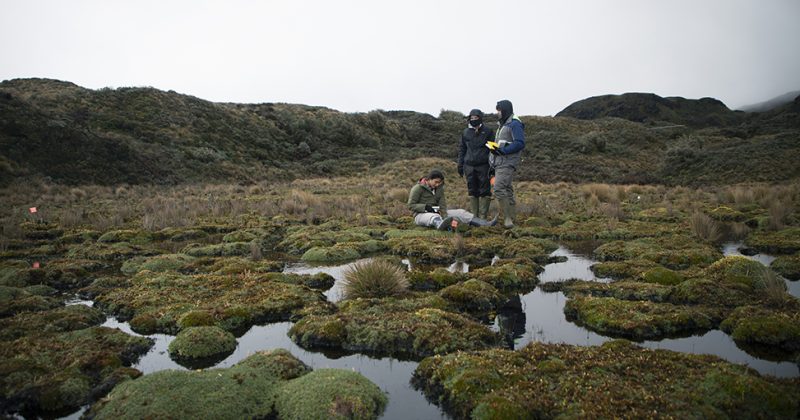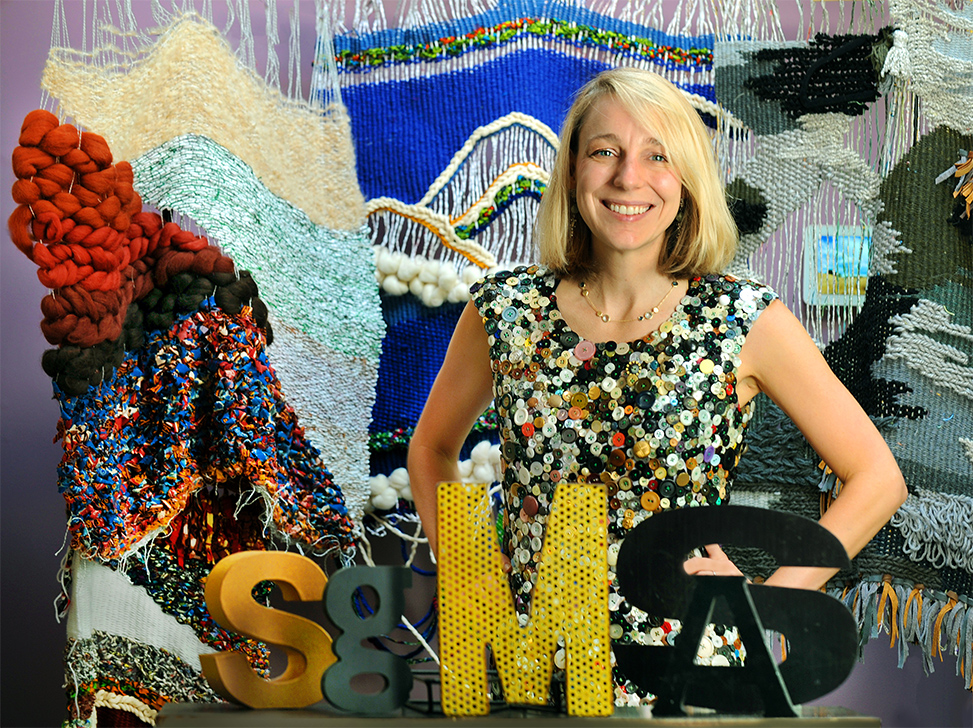
Sarah George-Waterfield wore this button dress she crafted for an innovative Ph.D. dissertation project to her May doctoral hooding ceremony. (photo by Donn Young)
A Ph.D. student’s innovative dissertation weaves together scholarship, fabric and storytelling in an immersive art installation.
Sarah George-Waterfield (Ph.D. ’19) fell in love with colorful West African fabrics while serving in the Peace Corps in Mali after receiving her undergraduate degree from Vanderbilt University in 2010.
Working as an environmental extension agent, she “helped build women’s gardens, drank a lot of tea and made friends with goats.”
But an unfortunate encounter with both a poisonous plant and a poisonous spider led to an early medical discharge, and she was left to wonder, “what next?”
She moved back home to Illinois, earned a master’s in English from Southern Illinois University, then received a Royster Fellowship to pursue a doctorate in English at Carolina.
“That extra level of financial support made the difference in my decision-making,” she said.
Her love of fabrics and of storytelling would resurface and take on greater meaning in her new home in Chapel Hill.
In addition to her studies, George-Waterfield served as editor of The Carolina Quarterly, a literary magazine, and helped create a companion podcast.
When it came time to start thinking about dissertation topics, she initially planned to write a traditional academic paper. But she came across a series of works that really spoke to her about the nexus of textiles and the South: Ntozake Shange’s 1982 novel Sassafrass, Cypress & Indigo, Jean Kwok’s 2011 novel Girl in Translation and Daisy Hernandez’s 2014 memoir A Cup of Water Under My Bed.
She wanted to represent what she was learning in a more creative, visual way. Her adviser told her she could pursue, with the same intellectual rigor as a monograph, an alternative or “innovative” dissertation. She had never done an art installation before, but for her 28th birthday, she asked her mother for a sewing machine and to teach her how to use it.
Her large-scale art installation, “Text and Textile,” was exhibited this past spring at multiple locations that are steeped in North Carolina’s textile history, including Greensboro and Saxapahaw. It consisted of three spaces representing her analysis of each literary work, blending narrative and fabric in various iterations — from a dress made entirely of buttons to skirts made out of book pages to a tapestry woven with shreds of a novel and reclaimed fabric. In one room, a soundtrack of sewing machine sounds — all crowdsourced— played on a loop. In another was the sound of scissors clipping.
A quilt in the foyer led visitors into the interactive exhibit; it was embroidered with metaphors relating to textile work, like “weaving a story” or “telling a yarn.”
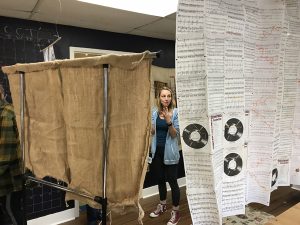
In her artist’s statement, she wrote: “I combine austere paper and vibrant fabric in unexpected ways … to convey the ways that memory and narrative reside in the warp and the weft, in the feel of the fabric on the fingers, in the taste of string in the mouth.”
George-Waterfield, who calls her project a “labor of love and toil,” advises students who want to pursue an alternative dissertation to make sure they have a robust support system. She praised the insights of her dissertation committee.
“Be open to the process,” she said. “Also, look at the types of jobs you are interested in — tenure track or not — and figure out what kinds of skills may be required and build those into your dissertation process, for example, arts advocacy or creating a website.”
Much of the exhibit pieces have now been dissembled, but George-Waterfield saved a few.
She wore the button dress to her graduation.
By Kim Weaver Spurr ’88
Published in the Fall 2019 issue | Tar Heels Up Close
Read More
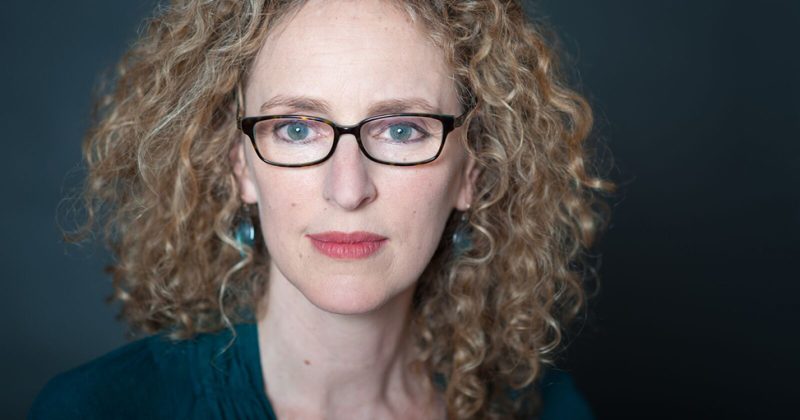
PlayMakers’ Benesch is Broadway bound
Vivienne Benesch, producing artistic director of PlayMakers Repertory Company, will…
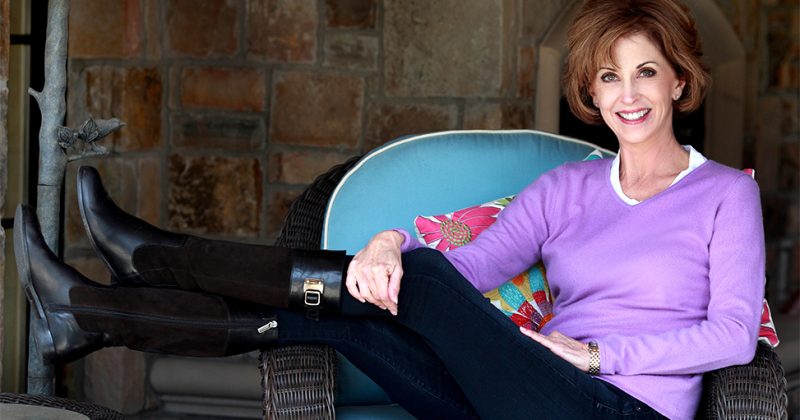
Seed funding will bolster innovative research projects in psychology
A family legacy of UNC alumni and a passion for…


